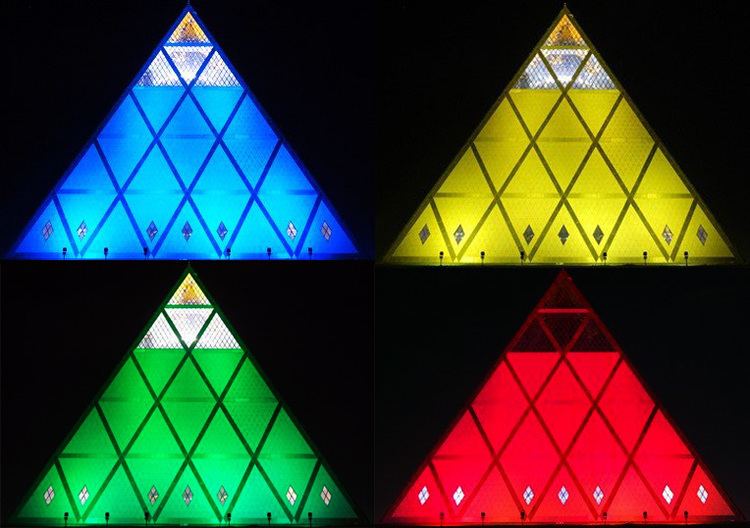Status Complete Construction started 2004 Opening September 1, 2006 Height 62 m Architect Norman Foster | Completed 2006 Owner city of Astana Phone +7 717 274 4744 | |
 | ||
Hours Open today · 10AM–6PMTuesday10AM–6PMWednesday10AM–6PMThursday10AM–6PMFriday10AM–6PMSaturday10AM–6PMSunday10AM–6PMMonday10AM–6PMSuggest an edit Similar Bayterek Tower, Khan Shatyr Entertain, Khazret Sultan Mosque, The Museum of the First P, National Museum of the Repu | ||
The Palace of Peace and Reconciliation (Kazakh: Бейбітшілік пен келісім сарайы), also translated as the Pyramid of Peace and Accord, is a 77 m high building in Astana, the capital of Kazakhstan. The structure was built by Sembol Construction at a cost of 8.74 billion Kazakh tenge (about $58 million) and opened in late 2006.
Contents
05 palace of peace and reconciliation astana kazakhstan
Design
The pyramid portion of the building is 62m high which sits on a 15m high earth covered block. All of this construction is above ground level. Though the landscaping of the park rises up to cover the lower levels, these are not in fact basements.
It was designed by the British architects Foster and Partners (lead design). Turkish architectural firm Tabanlıoğlu Architects undertook construction information packages for the Foster design and engineers Buro Happold undertook lead structural and services design. The Foster team was led by architects Nigel Dancey, Peter Ridley and Lee Hallman. Sembol Construction undertook a Design and Build contract, and were ultimately responsible for the final details and finishes, some of which varied considerably from the Foster and Tabanlıoğlu (Tabanlioglu) intent. Auditorium and performance equipment design was by Anne Minors Performance Consultants and acoustics by Sound Space Design.
The structure is made up of five "stories" of triangles, each triangle being 12 m on a side. The lower portions, three "stories" of triangles, are clad in pale granite. The upper two rows of triangles, 4 triangles per side, form a glazed apex; instead of stone cladding the triangles of the apex feature a design of stained glass by Brian Clarke, incorporating doves.
Construction is of steel frame for the pyramid and concrete for the lower levels. The engineers had to design the building to withstand expansion and contraction due to temperature variations of over 80°C, from -40 to over 40°C - leading to an expansion of the building of up to 30 cm.
The Pyramid was specially constructed to host the Congress of Leaders of World and Traditional Religions. It contains accommodations for different religions: Judaism, Islam, Christianity, Buddhism, Hinduism, Daoism and other faiths. It also houses a 1,500-seat opera house, a national museum of culture, a new "university of civilization", a library and a research center for Kazakhstan's ethnic and geographical groups. This diversity is unified within the pure form of a pyramid, 62m (203ft) high with a 62x62m (203x203ft) base. The building is conceived as a global center for religious understanding, the renunciation of violence and the promotion of faith and human equality.
The Pyramid of Peace expresses the spirit of Kazakhstan, where cultures, traditions and representatives of various nationalities coexist in peace, harmony and accord. Bathed in the golden and pale blue glow of the glass (colors taken from the Kazakhstan flag), 200 delegates from the world's main religions and faiths will meet every three years in a circular chamber — based on the United Nations Security Council meeting room in New York. ; Height: 77 m (252.62 ft)p total area: 25,500 sq.m.; Accommodates: Opera Hall for 1,500 seats, The Museum of National History, The Research Center of World Religions, Library of Spiritual Religious Literature, Exhibition and conference rooms
The International Astana Action Film Festivals were held here in 2011 and 2013.
